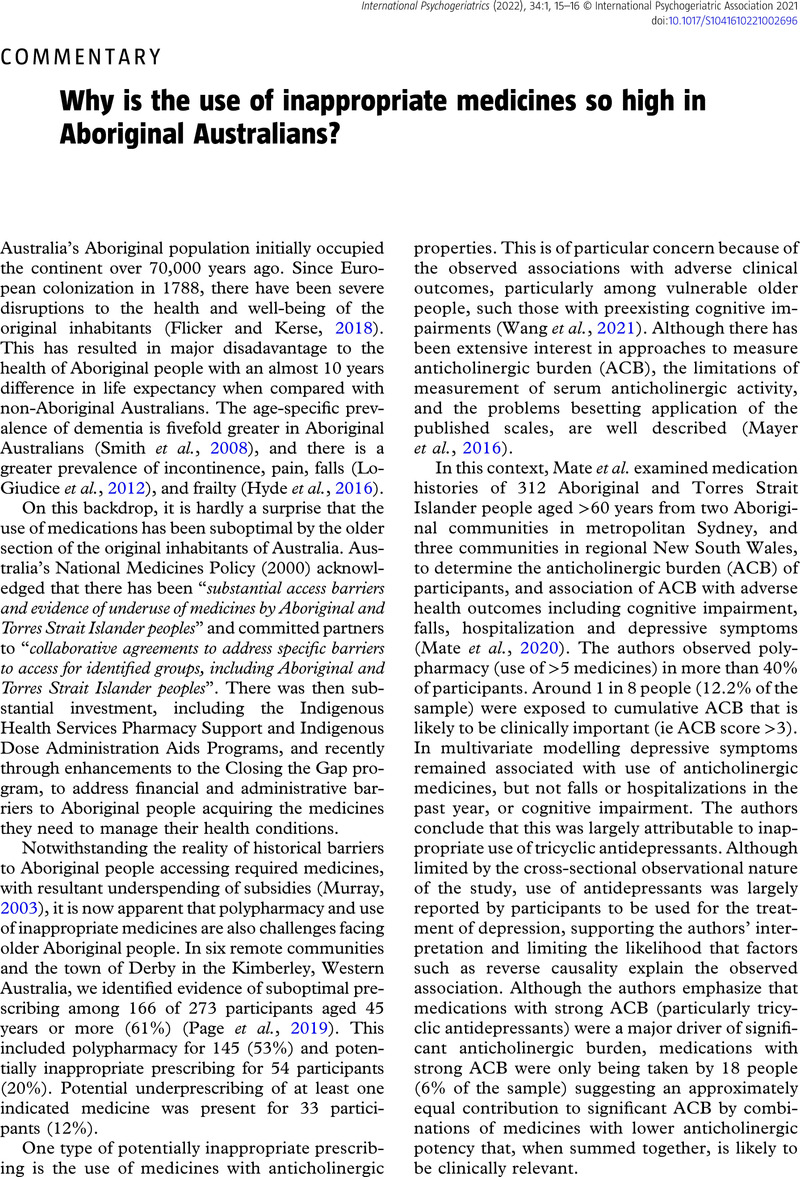Crossref Citations
This article has been cited by the following publications. This list is generated based on data provided by Crossref.
Korinihona, Tania
Thompson, Fintan
Russell, Sarah Gillian
Quigley, Rachel
Miller, Gavin
Sagigi, Betty
and
Strivens, Edward
2025.
The prevalence of suboptimal prescribing of medication in First Nations older adults in the Torres Strait.
Australasian Journal on Ageing,
Vol. 44,
Issue. 1,



